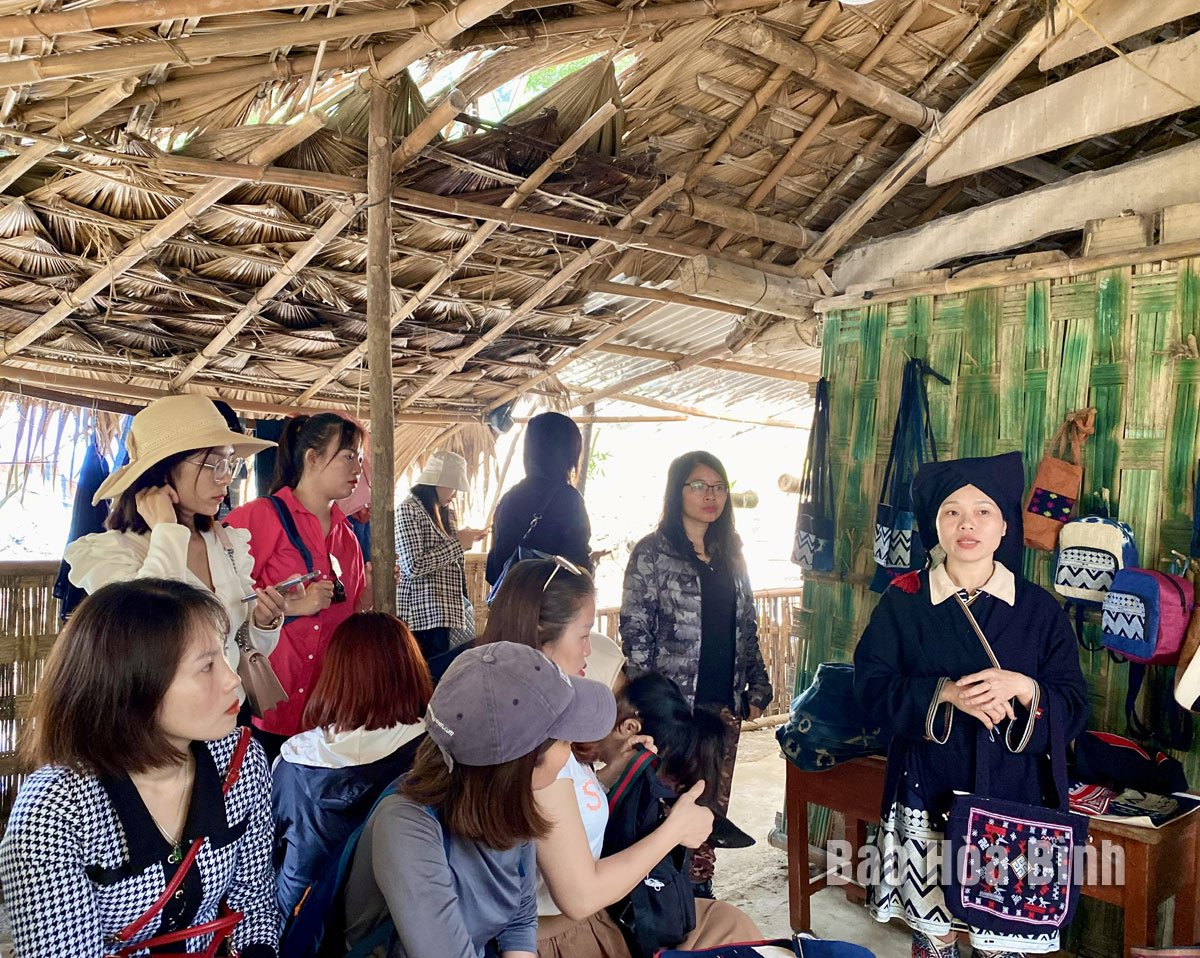
Tourists experience the traditional culture of the Dao people at Sung hamlet, Cao Son commune, Da Bac district - a 3-star OCOP community tourism destination of the province.
The first step on a long journey
Issued on September 9, 2021, Project No. 03-DA/TU of the Standing Committee of the Hoa Binh Provincial Party Committee aims to "develop agriculture, promote product consumption associated with new rural construction (NTM) in the period of 2021 - 2025". This is one of the major socio -economic orientations of the province, aiming to create NTM not only with infrastructure and institutions, but also with economic strength and local products.
According to the assessment of the Department of Culture, Sports and Tourism, Hoa Binh currently has great potential for developing community-based tourism. Among them, the most prominent are the diverse ethnic identity, rich natural landscape, proximity to the capital Hanoi and being a familiar destination for international tourists. With more than 150 community accommodation facilities (homestay) and more than 2,300 beds in the village, community-based tourism has favorable conditions to become the main direction in many highland districts if invested synchronously.
Implementing Project No. 03-DA/TU, the Department of Culture, Sports and Tourism proactively integrates appropriate contents into regular work plans, especially in the fields of rural tourism and OCOP product development.
The first highlight is the English training classes and OCOP communication and sales skills held in 4 districts: Da Bac, Lac Son, Mai Chau, Tan Lac, with 104 participants. People who used to live in fields and markets are now exposed to the concept of community-based tourism, learning how to welcome guests and promote local products. Although they are still confused, they have made a start. "I never thought that one day I would learn how to do tourism. The class was only a few sessions, but I learned how to invite guests and say a few basic English sentences. When foreign guests come to the village, I am a little more confident," said Mr. Bui Van Thoan, a resident of Van Son commune, Tan Lac district.
Along with that, a number of community-based tourism sites have been standardized and included in the OCOP product system, such as Ngoi hamlet (Suoi Hoa commune, Tan Lac district), Cha Day hamlet (Pa Co commune, Mai Chau district), Sung hamlet (Cao Son commune, Da Bac district)... In particular, Mo hamlet has been recognized as a 4-star OCOP community-based tourism site in 2024 - a notable milestone on the Hoa Binh rural tourism map.
Implementing Project No. 03-DA/TU, in recent years, the Department of Culture, Sports and Tourism has organized the Ethnic Community Tourism Village Festival, supporting 600 million VND from the national target program to develop OCOP rural tourism. There are 5 OCOP tourism products recognized; 50 students in Mai Chau and Tan Lac districts are trained in English and communication skills, at the same time, 157 students in Tan Lac district are trained in community tourism and on-site tour guides. However, revenue from community tourism is still quite modest.
"We clearly identify the role of culture and tourism in building new rural areas, especially community tourism. Although resources are limited, the industry still strives to integrate tasks into regular plans, while closely coordinating with localities to discover and upgrade destinations," said the leader of the Department of Culture, Sports and Tourism.
Propaganda images, art performances, billboards, and slogans about the new rural areas are now not simply propaganda tools, but have begun to be linked to concrete actions - from training human resources to building destinations, gradually making tourism a real part of the sustainable rural development program.
The bottlenecks are not easy to remove.
Rural tourism has taken a start. However, to develop into a sustainable supporting economic sector, there are still bottlenecks that cannot be overlooked. Typically, many community tourism points have been named in the OCOP product system, but the accompanying services lack appeal and distinction. Promotional activities are mainly introductory, not creating a stable connection chain between destinations - businesses - tourists. Tour and route organization capacity is limited; people have basic skills but lack practical experience; tourism businesses are still hesitant because of the lack of infrastructure and stable output products...
In particular, according to the Department of Culture, Sports and Tourism, the unit was not assigned specific tasks in Plan No. 242/KH-UBND - the document implementing Project No. 03-DA/TU. This is an important gap that makes it difficult for the industry to allocate separate resources for rural tourism development, leading to the need to integrate tasks into regular plans, lacking in depth and long-term.
Along with that is the problem of infrastructure. Many potential tourist destinations are located deep in difficult areas, with degraded roads and no standard accommodation. Funding for organizing training courses and promoting activities still depends largely on the higher-level budget - which is very limited.
Based on the above reality, according to Mr. Bui Xuan Truong, Deputy Director of the Department of Culture, Sports and Tourism, the industry has proposed that the Steering Committee of the National Target Program on New Rural Development of the province and localities need to increase resource support to standardize OCOP tourism products; expand in-depth training courses for grassroots officials; have a coordination mechanism and assign tasks more clearly to departments and branches in implementing Project No. 03-DA/TU in the coming period.
Rural tourism in Hoa Binh has taken its first steps. But without policy support and strong leadership, the journey will remain a cycle of experimentation, then… stagnation. In many villages, the gates are still open, but people are waiting for something beyond visitors. They are waiting for a true connection between local potential and a sustainable development strategy.
Minh Vu
Source: https://baohoabinh.com.vn/276/201752/Du-lich-cong-dong-con-nhung-diem-nghen.htm












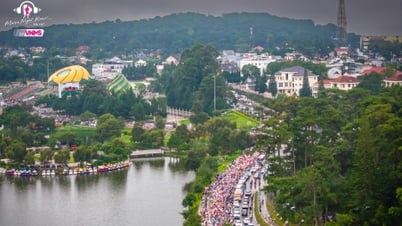

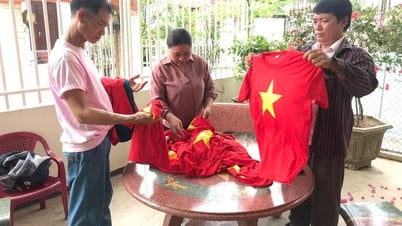



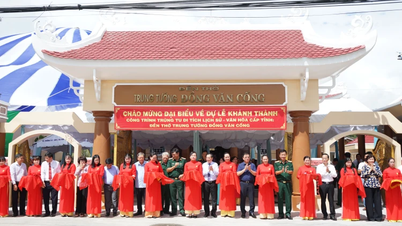




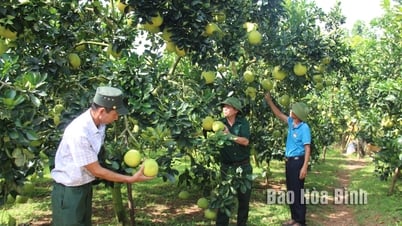
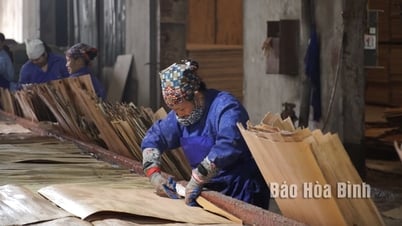

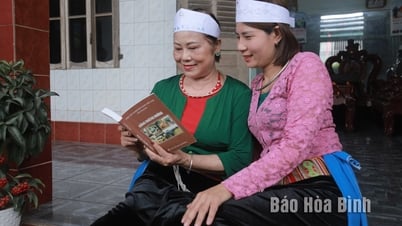

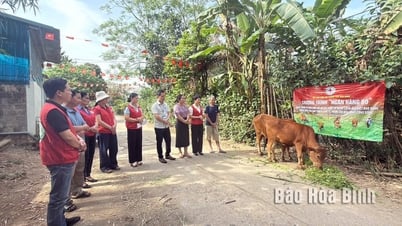














































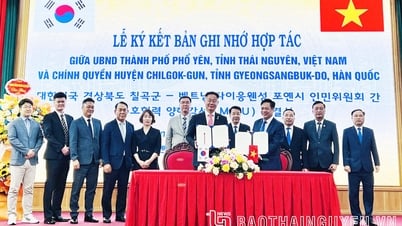

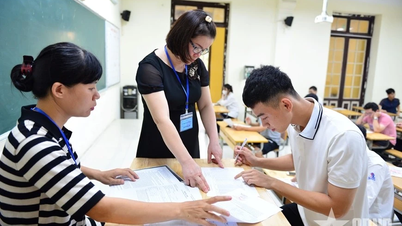

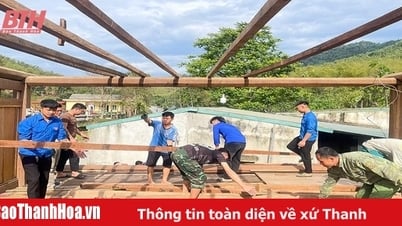

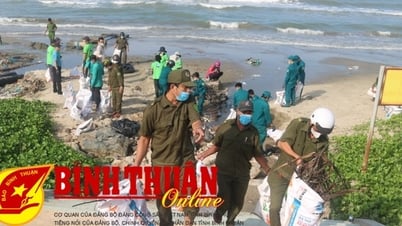









![[OCOP REVIEW] Tu Duyen Syrup - The essence of herbs from the mountains and forests of Nhu Thanh](https://vphoto.vietnam.vn/thumb/402x226/vietnam/resource/IMAGE/2025/6/5/58ca32fce4ec44039e444fbfae7e75ec)




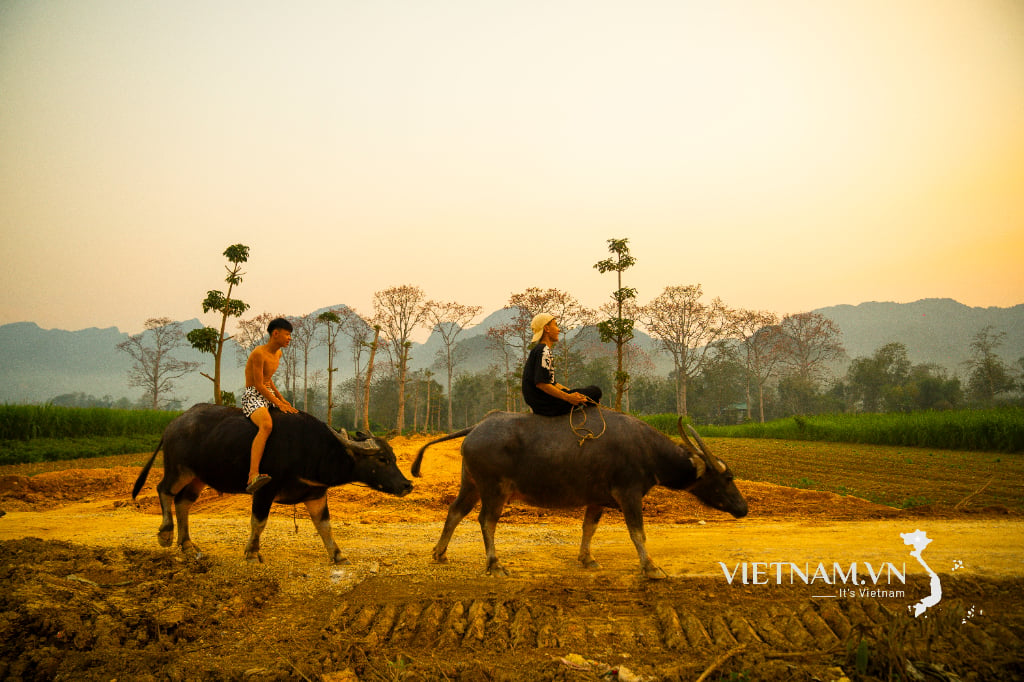
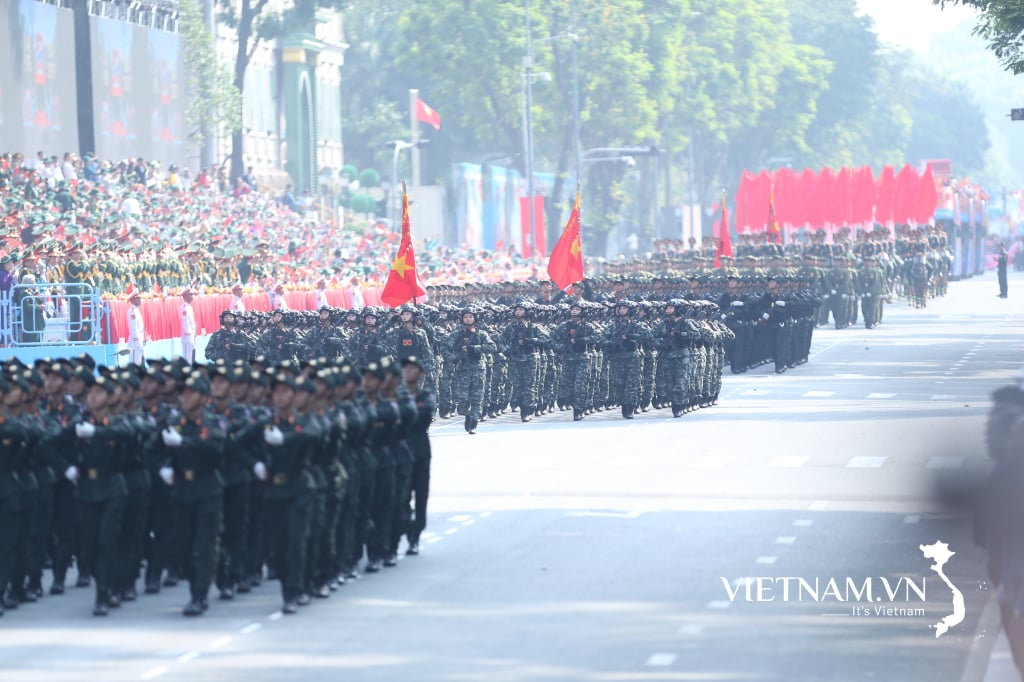
Comment (0)